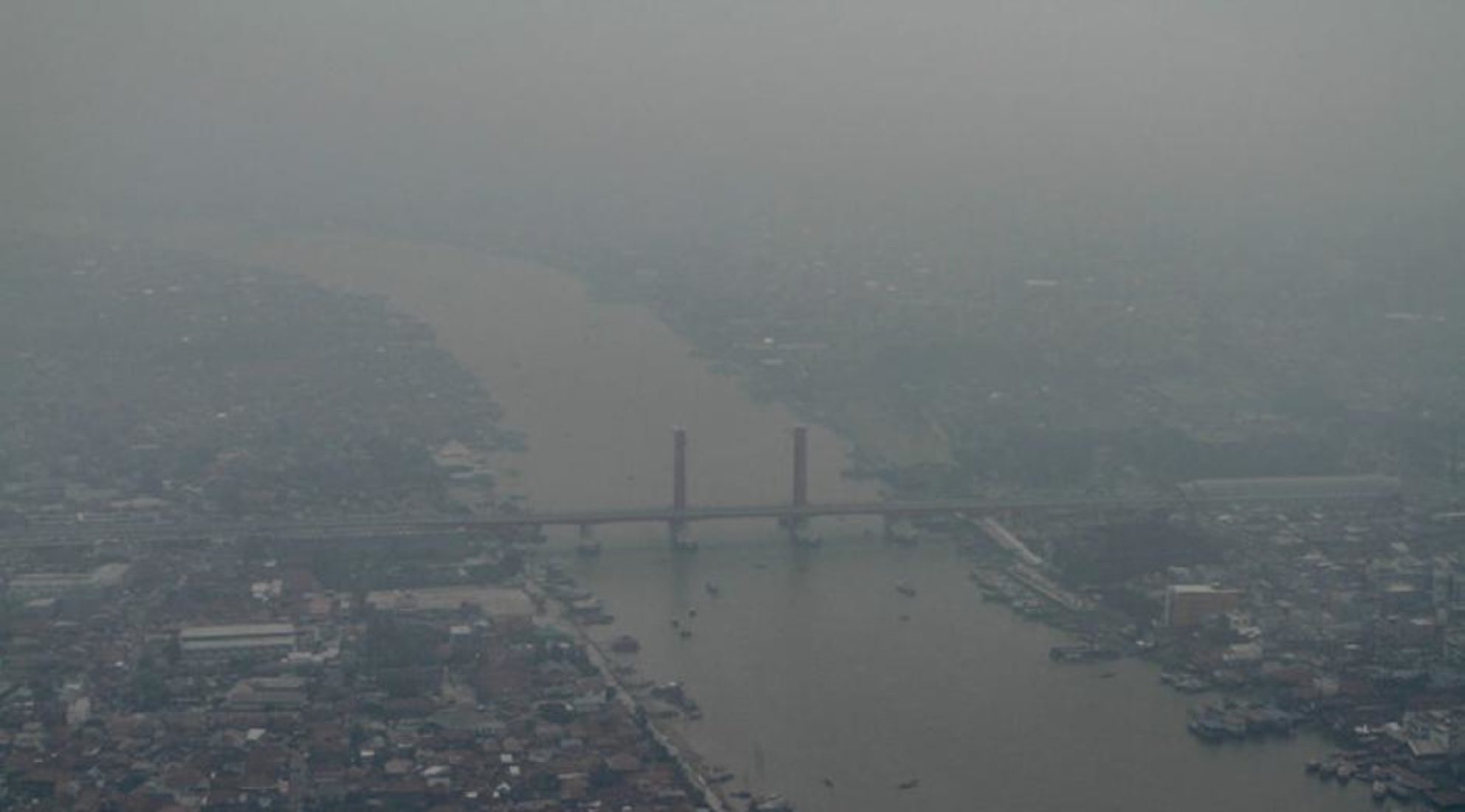Notícias
Como o aumento da ameaça de queimadas e mudanças climáticas no Sudeste Asiático está colocando em risco ainda mais a saúde pública

(blog em Inglês)
This opinion piece first ran on 7March 2022 in South China Morning Post
- As pulp and paper mill companies in Indonesia look to ramp up production, a coming period of hot, dry weather is set to increase the risk of forest fires that cloak the region in a toxic haze
- This would dramatically worsen the health effects of respiratory diseases like Covid-19
One of the few mercies of the Covid-19 pandemic in Southeast Asia is that the initial outbreak did not occur during a severe fire and haze year, and that the wet and cool climatic pattern known as La Niña has kept fires down in the past few years.
This looks like it’s about to change. Meteorologists are predicting 2022 will see the return of hot, dry and fire-prone conditions known as El Niño, a climate pattern that’s becoming more frequent and severe due to climate change.
If Covid-19 had arrived during a catastrophic El Niño fire year like 2015 or 2019 – when tens of millions of people in parts of Indonesia, Singapore and Malaysia were affected by toxic smoke – the death toll would probably have been far higher.
Exposure to air pollution, like the haze that results from forest fires, dramatically worsens the health effects of Covid-19.
It is becoming apparent that Covid-19 is now globally endemic, which is why cutting susceptibility to it and other respiratory diseases by tackling air pollution, especially fine particulate matter, is a public health priority. It is also why the planned expansion of two massive pulp and paper mills in Sumatra should raise alarm bells for Indonesia and its neighbours.
The vast pulpwood plantations controlled by Asia Pulp & Paper (APP) and Asia Pacific Resources International (APRIL) have the largest fire footprints in Indonesia. Geospatial satellite analysis shows that the plantations burned every year between 2015 and 2019, with a total burned area of nearly 250,000 hectares – over 3.5 times the land mass of Singapore.
This has serious impacts on air quality, with residents of Riau and South Sumatra – home to APRIL and APP pulp operations – forecast to lose up to six years of life expectancy compared with populations in areas where air pollution meets World Health Organization safety guidelines.
Furthermore, as the plantations of these companies sit on the Indonesian side of the Malacca Straits, prevailing winds from these fires blow the toxic haze to Singapore and Peninsular Malaysia.
Whenever the fires rage and the haze spreads, the media and policymakers are quick to blame “slash and burn” smallholder farmers. Yet the far more important question is: who turned parts of Indonesia, a country of ancient tropical rainforests, into a tinderbox?
The answer lies in the fate of Indonesia’s peatlands, areas of carbon-rich swampy soil deposited over millions of years that, when drained and dried out for cultivation, become extremely flammable – like a kind of young coal. Peat fires actually burn underground, spreading insidiously, and are difficult to extinguish. They also kick out extremely high levels of fine particle air pollution.
APP and APRIL’s wood suppliers have cleared, drained and planted on 887,000 hectares of peatlands. While these landbanks supply the fibre necessary to produce paper, tissue and fabrics like viscose rayon, they have also created a monumental fire hazard that the region must now face.
This environmental crisis also inflicts massive economic shocks. In 2015, the fires are estimated to have resulted in losses and damage amounting to US$16 billion in Indonesia and US$1.4 billion in Singapore.
The negative impact of these two companies is evident. APRIL has received 12 civil sanctions and a three-year suspension of operations in some areas. In 2020, it disclosed that it had received yet another sanction due to peat fires. Singapore confirmed it is investigating four pulpwood suppliers of APP suspected of causing toxic haze in Singapore in 2015 under the Transboundary Haze Pollution Act.
Despite the dire health and environmental consequences, APP and APRIL are planning to ramp up their production by 150 per cent and 55 per cent respectively. This will mean intensified cultivation of flammable peatland, increasing the risk of fires. What’s worse, climate change is increasing the frequency and severity of El Niño events.
The stakes are huge. If the mill expansions proceed, fires and haze are likely to get worse. The expansions, however, are not a foregone conclusion. They will require billions of dollars of financing. Banks should see the writing on the wall and refuse to stump up the cash.